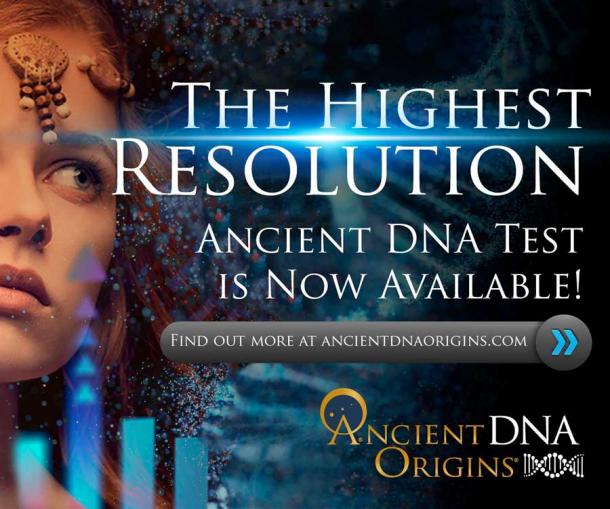
DNA of First Settlers of Scandinavia Gleaned from Ancient Chewing Gums
The first humans who settled in Scandinavia more than 10,000 years ago left their DNA behind in ancient chewing gums, which are masticated lumps made from birch bark pitch. This is shown in a new study conducted at Stockholm University and published in Communications Biology.
There are few human bones of this age, close to 10,000 years old, in Scandinavia, and not all of them have preserved enough DNA for archaeogenetic studies. In fact, the DNA from these newly examined chewing gums is the oldest human DNA sequenced from this area so far.
The DNA derived from three individuals, two females and one male, creates an exciting link between material culture and human genetics.

Piece of birch bark chewing gum containing oldest Scandinavian DNA (Image: Natalija Kashuba et al / Nature)
Alternative Scandinavian DNA Source
Previous DNA studies from the area were based on DNA derived from bones and teeth of seven individuals from the Norwegian Atlantic coast and the Baltic islands of Gotland and Stora Karlsö, dated to between 9,500-6000 years old, as reported in The Conversation. Colonization of Scandinavia is roughly dated to around 11,700 years ago and was one of the last parts of Europe to be populated when ice retreated in the area.
Ancient chewing gums are as of now an alternative source for human DNA and possibly a good proxy for human bones in archaeogenetic studies. The investigated pieces come from Huseby-Klev, an early Mesolithic hunter-fisher site on the Swedish west coast. The sites excavation was done in the early 1990's, but at this time it was not possible to analyze ancient human DNA at all, let alone from non-human tissue. The masticates were made out of birch bark tar and used as glue in tool production and other types of technology during the Stone Age.

This is an excavation of the Huseby-Klev site in the 1990's. (Per Persson/Stockholm University)
"When Per Persson and Mikael Maininen proposed to look for hunter-gatherer DNA in these chewing gums from Huseby Klev we were hesitant but really impressed that archaeologists took care during the excavations and preserved such fragile material," says Natalija Kashuba, who was affiliated to The Museum of Cultural History in Oslo when she performed the experiments in cooperation with Stockholm University.
"It took some work before the results overwhelmed us, as we understood that we stumbled into this almost 'forensic research', sequencing DNA from these mastic lumps, which were spat out at the site some 10,000 years ago!" says Natalija Kashuba. Today Natalija is a Ph.D. student at Uppsala University.
- Ancient DNA Sheds Light on the Mysterious Origins of the First Scandinavians
- Petroglyphs Left in Canada by Scandinavians 3,000 Years Ago?
- Retaining Ancient Ways: Codex Runicus, How the Runic Script Survived in the Middle Ages

The studied material and its origin. a One of the chewing gums from Huseby Klev, (Fynd 2037), with two plastelina casts for each side. b The location of the sites, genomes from which were used in this study. (Image: Natalija Kashuba et al / Nature)
Exciting link between material culture and human genetics
The results show that, genetically, the individuals whose DNA was found share close genetic affinity to other hunter-gatherers in Sweden and to early Mesolithic populations from Ice Age Europe. However, the tools produced at the site were a part of lithic technology brought to Scandinavia from the East European Plain, modern day Russia. This scenario of a culture and genetic influx into Scandinavia from two routes was proposed in earlier studies, and these ancient chewing gums provide an exciting link directly between the tools and materials used and human genetics.
Emrah Kirdök at Stockholm University conducted the computational analyses of the DNA. "Demography analysis suggests that the genetic composition of Huseby Klev individuals show more similarity to western hunter-gatherer populations than eastern hunter-gatherers," he says.
"DNA from these ancient chewing gums have an enormous potential not only for tracing the origin and movement of peoples long time ago, but also for providing insights in their social relations, diseases and food," says Per Persson at the Museum of Cultural History in Oslo. "Much of our history is visible in the DNA we carry with us, so we try to look for DNA where ever we believe we can find it," says Anders Götherström, at the Archaeological Research Laboratory at Stockholm University, where the work was conducted. The study is published in Communications Biology.
Top image: One of the chewing gums containing the oldest Scandinavian DNA from Huseby Klev with two plastelina casts for each side. Source: Natalija Kashuba et al / Nature
Source: Stockholm University. "Chewing gums reveal the oldest Scandinavian human DNA." ScienceDaily. ScienceDaily, 15 May 2019. www.sciencedaily.com/releases/2019/05/190515085450.htm.
References
Natalija Kashuba, Emrah Kırdök, Hege Damlien, Mikael A. Manninen, Bengt Nordqvist, Per Persson, Anders Götherström. Ancient DNA from mastics solidifies connection between material culture and genetics of mesolithic hunter–gatherers in Scandinavia. Communications Biology, 2019; 2 (1) DOI: 10.1038/s42003-019-0399-1
















